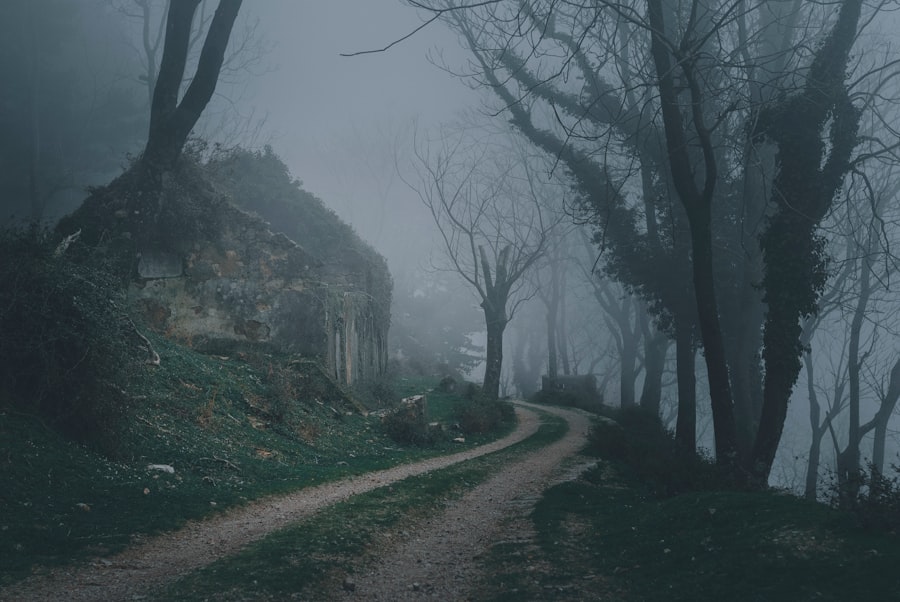The Drake Passage, a body of water that separates South America from Antarctica, is often regarded as one of the most treacherous maritime routes in the world. Stretching approximately 600 miles, it serves as a gateway for vessels venturing to the icy continent of Antarctica. Named after the English explorer Sir Francis Drake, who navigated these waters in the late 16th century, the passage is notorious for its unpredictable weather patterns and tumultuous seas.
The confluence of the Atlantic and Pacific Oceans creates a unique environment where powerful currents and fierce winds converge, making it a formidable challenge for even the most seasoned mariners. For adventurers and researchers alike, crossing the Drake Passage is both a rite of passage and a test of endurance. The allure of Antarctica’s pristine landscapes and unique wildlife draws many to brave the journey, yet the passage itself is fraught with danger.
Understanding the complexities of this maritime corridor is essential for anyone considering a voyage through its waters. The Drake Passage is not merely a geographical feature; it embodies the spirit of exploration and the inherent risks that come with venturing into the unknown.
Key Takeaways
- The Drake Passage is a treacherous body of water located between South America’s Cape Horn and the South Shetland Islands of Antarctica.
- Crossing the Drake Passage poses numerous dangers, including extreme weather conditions, rough seas, and strong winds.
- Many harrowing tales of storms and high seas have been recounted by those who have crossed the Drake Passage.
- The fear of icebergs and ice floes adds another layer of peril to the already hazardous journey through the Drake Passage.
- Strategies and tips for surviving the Drake Passage include proper preparation, experienced crew, and a sturdy vessel.
The Perils of Crossing the Drake Passage
Navigating the Drake Passage is an endeavor that demands respect and preparation. The perils associated with this crossing are numerous, ranging from sudden storms to towering waves that can reach heights of over 30 feet. The unpredictable nature of the weather can transform a calm sea into a chaotic tempest within minutes, leaving vessels at the mercy of nature’s fury.
Mariners must be acutely aware of these dangers, as even well-equipped ships can find themselves in dire straits if they are caught unprepared. Moreover, the passage is notorious for its strong currents, particularly the Antarctic Circumpolar Current, which flows from west to east around Antarctica. This current can create challenging conditions for navigation, often leading to rough seas that test the limits of both ship and crew.
The combination of high winds, turbulent waters, and shifting weather patterns makes crossing the Drake Passage a daunting task that requires not only skill but also an understanding of the ocean’s moods.
Tales of Storms and High Seas

Throughout history, countless sailors have recounted harrowing tales of their experiences in the Drake Passage. These stories often feature violent storms that arise without warning, battering ships with relentless waves and fierce winds. One such account tells of a vessel that was tossed about like a toy in a bathtub, its crew struggling to maintain control as they fought against nature’s wrath.
The storm raged for hours, with waves crashing over the deck and water pouring into the ship’s hold. It was a battle for survival, one that would leave an indelible mark on those who lived to tell the tale. Another sailor recounted a near-miss with disaster when their ship was caught in a squall that seemed to come out of nowhere.
The crew scrambled to secure loose equipment and batten down hatches as the wind howled and rain lashed against their faces. In moments like these, time seems to stretch, and every decision carries weight. The experience serves as a stark reminder of the Drake Passage’s reputation as a place where nature reigns supreme, and human beings are but temporary visitors in its vast expanse.
The Fear of Icebergs and Ice Floes
| Country | Number of Iceberg Sightings | Number of Ice Floe Incidents |
|---|---|---|
| Canada | 120 | 15 |
| Greenland | 90 | 10 |
| Norway | 60 | 5 |
In addition to storms and high seas, another significant concern for those crossing the Drake Passage is the presence of icebergs and ice floes. As vessels approach Antarctica, they must navigate through waters that can be littered with these massive chunks of ice, which pose a serious threat to navigation. Icebergs can be deceptively large, often extending far below the water’s surface, making them difficult to detect until it is too late.
The fear of colliding with an iceberg is a constant worry for captains and crew members alike. Ice floes present their own set of challenges, as they can drift unpredictably with ocean currents. Ships must remain vigilant and maintain a safe distance from these floating masses to avoid potential disaster.
The sight of an iceberg looming in the distance can evoke both awe and trepidation; while they are stunningly beautiful, they also serve as a stark reminder of nature’s power and unpredictability. For many sailors, navigating through these icy waters becomes a delicate dance between admiration for their surroundings and caution against their dangers.
Surviving the Drake Passage: Strategies and Tips
For those determined to cross the Drake Passage, preparation is key to ensuring a safe journey. Mariners often emphasize the importance of choosing the right vessel for the crossing; sturdy ships designed for polar conditions are essential for withstanding the harsh elements encountered in these waters. Additionally, having experienced crew members who understand the intricacies of navigating through turbulent seas can make all the difference in ensuring safety.
Planning ahead is equally crucial. Sailors are advised to monitor weather forecasts closely and be prepared to alter their course if conditions become too dangerous. Flexibility is vital when traversing this unpredictable passage; sometimes waiting for a more favorable weather window can mean the difference between a successful crossing and a perilous situation.
Furthermore, equipping vessels with advanced navigation technology can aid in detecting icebergs and other hazards, allowing crews to make informed decisions as they navigate through this challenging environment.
The Haunting Beauty of the Southern Ocean

Despite its dangers, the Southern Ocean surrounding the Drake Passage possesses an ethereal beauty that captivates those who venture into its depths. The stark contrast between the deep blue waters and the white icebergs creates a breathtaking landscape that feels otherworldly. As ships sail through this region, they are often treated to stunning vistas that include towering glaciers, rugged coastlines, and expansive ice fields that stretch as far as the eye can see.
The haunting beauty of this remote ocean serves as both an inspiration and a reminder of nature’s raw power. Many sailors find solace in these moments of tranquility amidst chaos; it is during these times that they reflect on their journey and their place within this vast ecosystem. The Southern Ocean is not just a passageway; it is a realm where humanity encounters nature in its most unrefined form, evoking feelings of humility and reverence.
Close Encounters with Wildlife
One of the most rewarding aspects of crossing the Drake Passage is the opportunity to encounter diverse wildlife that thrives in this unique environment. From majestic whales breaching the surface to playful seals basking on ice floes, sailors often find themselves surrounded by an array of fascinating creatures. These encounters serve as poignant reminders of the interconnectedness of life on Earth and highlight the importance of preserving these fragile ecosystems.
Birdwatchers are particularly drawn to this region, as it is home to numerous seabird species, including albatrosses and petrels that glide gracefully above the waves. Observing these magnificent birds in their natural habitat adds another layer of wonder to the journey across the Drake Passage. For many travelers, these close encounters with wildlife become cherished memories that linger long after their voyage has ended.
The Psychological Toll of Crossing the Drake Passage
While crossing the Drake Passage can be an exhilarating experience filled with moments of beauty and wonder, it also takes a psychological toll on those who undertake this journey. The constant threat of storms, icebergs, and unpredictable weather can lead to heightened anxiety among crew members and passengers alike. The isolation inherent in navigating such remote waters can exacerbate feelings of vulnerability and fear.
Mariners often speak about the mental fortitude required to endure long hours at sea under challenging conditions. Maintaining focus becomes paramount; distractions can lead to mistakes that could have dire consequences. Crew members must support one another emotionally during difficult moments, fostering camaraderie that helps alleviate some of the psychological burdens associated with crossing this formidable passage.
Famous Shipwrecks and Tragic Losses
The history of maritime exploration in the Drake Passage is marked by tragedy, with numerous shipwrecks serving as somber reminders of its dangers. One notable incident involved the ill-fated vessel “Endurance,” which sank during an expedition in 1915 after becoming trapped in pack ice. The crew’s harrowing struggle for survival against overwhelming odds has become legendary, illustrating both human resilience and vulnerability in the face of nature’s might.
Another tragic event occurred when a passenger ship encountered severe weather conditions while traversing the passage, leading to catastrophic loss of life. Such incidents underscore not only the risks associated with crossing this treacherous waterway but also highlight humanity’s enduring quest for exploration despite these dangers. Each shipwreck tells a story—a testament to both ambition and caution in equal measure.
The Resilience of the Human Spirit
Despite its perils, crossing the Drake Passage embodies humanity’s resilience and spirit of adventure. Those who embark on this journey do so not only for exploration but also for personal growth and discovery. Each crossing becomes an opportunity to confront fears head-on while embracing challenges that push individuals beyond their limits.
The stories shared by those who have successfully navigated these waters often reflect themes of perseverance and determination.
The Legacy of Surviving the Drake Passage
Surviving a crossing through the Drake Passage leaves an indelible mark on those who undertake it—a legacy shaped by both triumphs and trials faced along the way. For many adventurers, this journey becomes more than just a physical challenge; it evolves into a profound personal experience that shapes their perspectives on life itself. As stories are passed down through generations—tales filled with awe-inspiring encounters with nature alongside harrowing accounts of survival—the legacy continues to inspire future explorers drawn to this remarkable region.
The Drake Passage stands not only as a formidable barrier but also as an emblematic testament to humanity’s enduring spirit—a reminder that even amidst chaos lies beauty waiting to be discovered.
For those intrigued by the eerie tales surrounding the Drake Passage, a notorious stretch of water known for its treacherous conditions and chilling maritime legends, you might find the article on MyGeoQuest particularly fascinating. This piece delves into the harrowing experiences of sailors who have braved these tumultuous waters, offering a deeper understanding of why the Drake Passage has earned its fearsome reputation. To explore more about these maritime horror stories, you can read the full article by visiting MyGeoQuest.
WATCH NOW! Drake Passage: Earth’s Deadliest Waters Revealed
FAQs
What is the Drake Passage?
The Drake Passage is the body of water between the southern tip of South America and the northern tip of the Antarctic Peninsula. It is known for its rough seas and challenging sailing conditions.
What are some common horror stories associated with the Drake Passage?
Common horror stories associated with the Drake Passage include extreme weather conditions, rough seas, and the feeling of isolation due to the remote location. Some travelers have reported experiencing seasickness, intense storms, and encounters with icebergs.
Are there any safety measures in place for travelers crossing the Drake Passage?
Travelers crossing the Drake Passage are typically advised to be prepared for rough seas and extreme weather conditions. Ships that traverse the passage are often equipped with experienced crew members, safety equipment, and emergency protocols to ensure the safety of passengers.
What should travelers consider before embarking on a journey across the Drake Passage?
Before embarking on a journey across the Drake Passage, travelers should consider their tolerance for rough seas and extreme weather, as well as their overall physical and mental preparedness for the challenges of the passage. It is also important to research and choose a reputable and experienced tour operator or cruise line.
